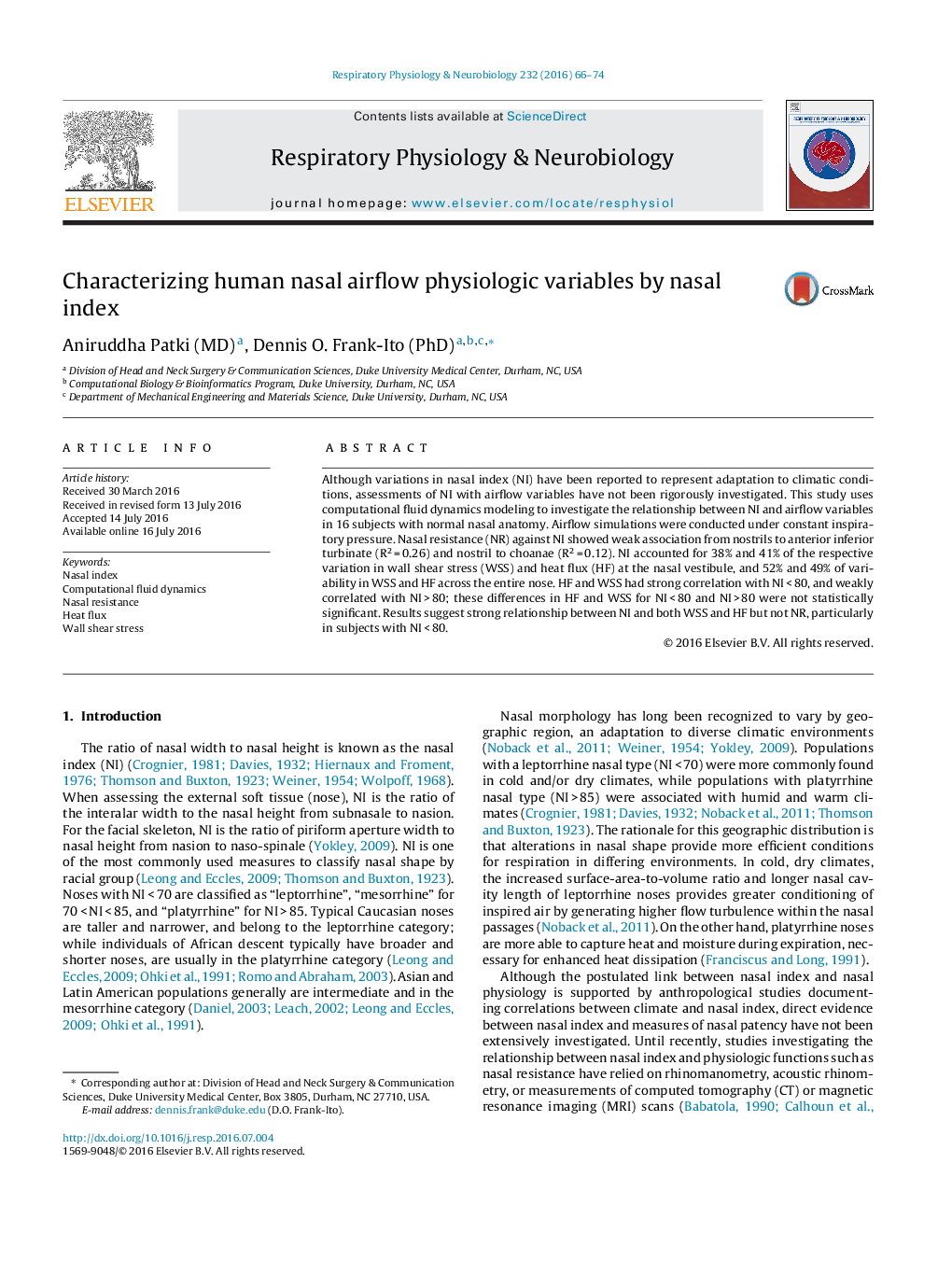| کد مقاله | کد نشریه | سال انتشار | مقاله انگلیسی | نسخه تمام متن |
|---|---|---|---|---|
| 2846615 | 1571298 | 2016 | 9 صفحه PDF | دانلود رایگان |
• Computational fluid dynamics modeling was used to investigate the relationship between nasal index and flow related variables.
• Computed tomography scans from 16 subjects with anatomically normal nasal cavities were used in this investigation.
• Results confirmed prior studies in the literature suggesting that nasal index and nasal resistance are weakly correlated.
• Nasal index accounted for 52% of variability in wall shear stress, the most among all airflow related variables investigated.
• Subjects with nasal index <80 had stronger correlations with wall shear stress and heat flux than those with nasal index ≥80.
Although variations in nasal index (NI) have been reported to represent adaptation to climatic conditions, assessments of NI with airflow variables have not been rigorously investigated. This study uses computational fluid dynamics modeling to investigate the relationship between NI and airflow variables in 16 subjects with normal nasal anatomy. Airflow simulations were conducted under constant inspiratory pressure. Nasal resistance (NR) against NI showed weak association from nostrils to anterior inferior turbinate (R2 = 0.26) and nostril to choanae (R2 = 0.12). NI accounted for 38% and 41% of the respective variation in wall shear stress (WSS) and heat flux (HF) at the nasal vestibule, and 52% and 49% of variability in WSS and HF across the entire nose. HF and WSS had strong correlation with NI < 80, and weakly correlated with NI > 80; these differences in HF and WSS for NI < 80 and NI > 80 were not statistically significant. Results suggest strong relationship between NI and both WSS and HF but not NR, particularly in subjects with NI < 80.
Journal: Respiratory Physiology & Neurobiology - Volume 232, October 2016, Pages 66–74
